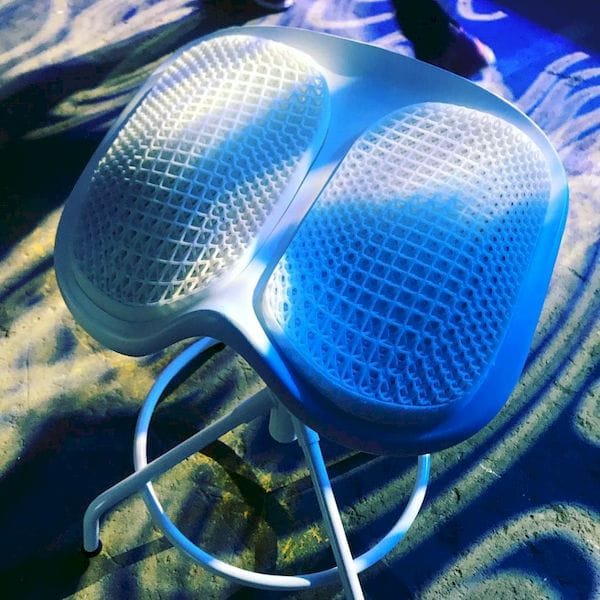![A partially 3D printed stool [Source: UNYQ]](https://fabbaloo.com/wp-content/uploads/2020/05/unyq-stool-ov_result_img_5eb0a721160a5.jpg)
A fascinating arrangement between IKEA and UNYQ will produce custom fitted stools for gamers.
While everyone knows IKEA, San Francisco-based UNYQ has been producing custom-fit 3D printed prosthetics for several years. The company is well suited for producing personalized items, as you might imagine.
And that is precisely the nature of their deal with IKEA, the worldwide manufacturer of inexpensive, minimally designed but devilishly complex to assemble furniture. The pair will produce a custom-fitted stool that is specifically designed to address the needs of gamers, who tend to sit for long periods. UNYQ explains:
“IKEA has engaged UNYQ to create a prototype that aims at making gaming equipment ergonomic, coherent and striking design. In short, a 3D printed chair for gamers. The prototype has taken only nine weeks to design and execute, showing the vast potential of UNYQ’s design team as well as their means of production. The result of this collaboration will be available for a limited time starting in 2020.”
IKEA says:
“There are around 2 billion gamers in the world – an overlooked group both from a life at home perspective as well as from a functional and ergonomic perspective. Together with UNYQ, a daring revolutioniser of 3D printed medical wearables and educational e-sport company Area Academy, IKEA wants to explore how personalisation and home furnishing can change gaming and life around it – addressing appearance, ergonomics and mobility.”
Marcus Engman, Head of Design at IKEA Range & Supply, says:
“By teaming up with UNYQ, IKEA wishes to learn how you could utilise photometric and 3D-scanning in combination with 3D-printing to make it possible to personalise products for better ergonomics and a more individualised appearance. Area Academy has the expert knowledge in what it takes in terms of equipment to make a truly great gamer, and to have a greater gaming experience.”
This appears to be a long-term partnership to develop custom products. But what will they start with? It appears to be a stool, as shown at top.
The only customizable element of a stool would be the seat, which again appears to be 3D printed above. However, the implication here is that in order to develop that custom seat design you must clearly perform a 3D scan of the recipient’s butt.
I’m not exactly certain how this would be done; I have never heard of 3D butt scanners, but I suspect some existing technology could be adapted for this purpose. But unlike other 3D scanning systems we’ve seen for developing 3D models for custom eyeglasses or personalized 3D printed footwear, the act of butt scanning might have to be done in a more discreet manner. They companies have not yet revealed how this will be done, but I’m interested to see how this works.
This all makes plenty of sense: if you examine the human body looking for heavily used customizable attachment points, you see only a few options:
-
Feet (for footwear)
-
Face (for eyeglasses)
-
Hands (for gloves or graspable items)
-
Butt (for seating)
In fact, the last could be the most frequently occurring scenario. We should have many implementations of this approach, and as a furniture maker, I am certain IKEA understands this.
3D printing allows for all manner of optimizations to occur in the ergonomic area, which has become a significant factor in modern furniture design. The seat customization could be just the start of a very long list of possible customizable options.
If this consortium is able to develop a feasible method for doing this, they could open up a very large market for personalized furniture of all kinds.











